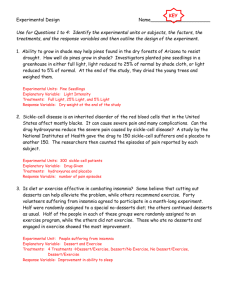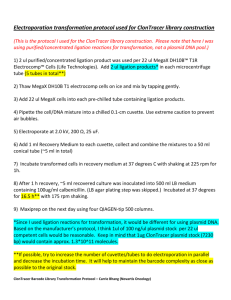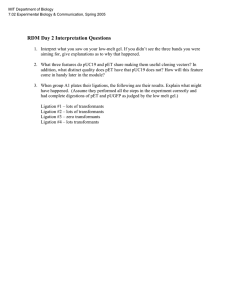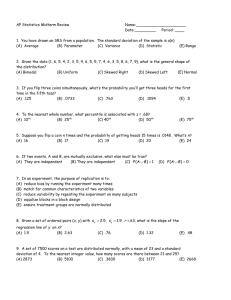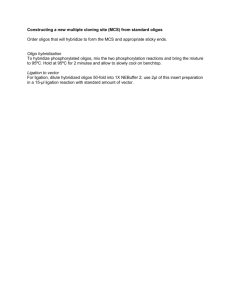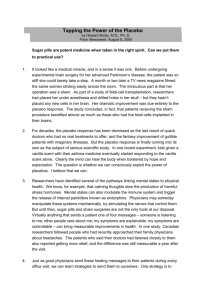Experimental Design Worksheet
advertisement
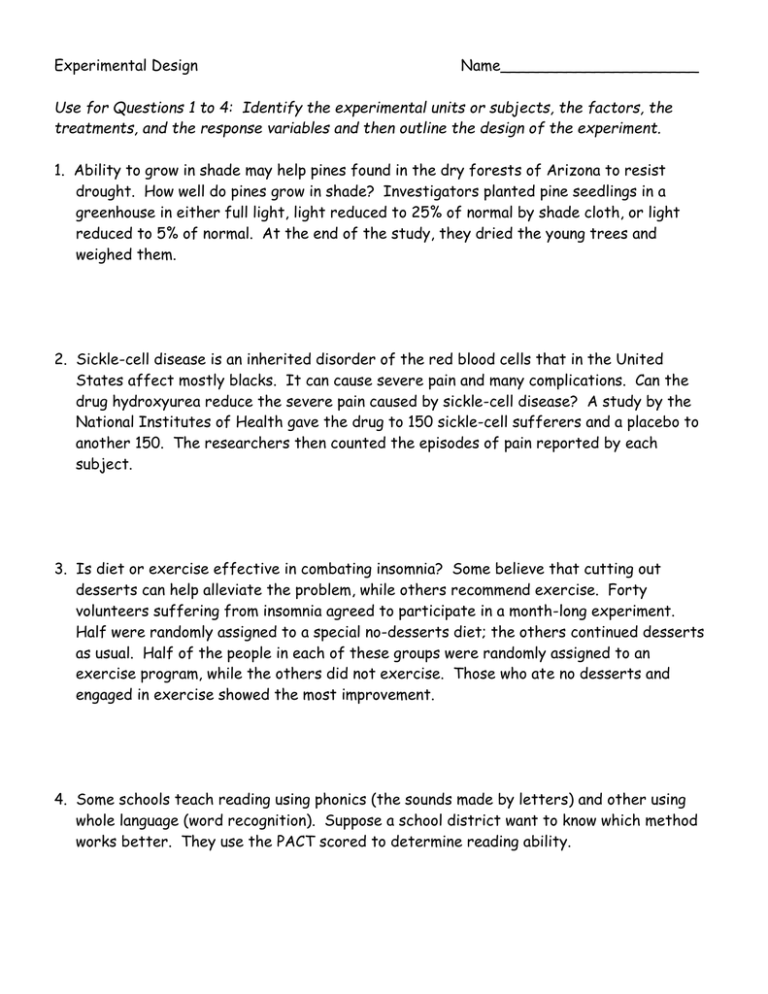
Experimental Design Name_____________________ Use for Questions 1 to 4: Identify the experimental units or subjects, the factors, the treatments, and the response variables and then outline the design of the experiment. 1. Ability to grow in shade may help pines found in the dry forests of Arizona to resist drought. How well do pines grow in shade? Investigators planted pine seedlings in a greenhouse in either full light, light reduced to 25% of normal by shade cloth, or light reduced to 5% of normal. At the end of the study, they dried the young trees and weighed them. 2. Sickle-cell disease is an inherited disorder of the red blood cells that in the United States affect mostly blacks. It can cause severe pain and many complications. Can the drug hydroxyurea reduce the severe pain caused by sickle-cell disease? A study by the National Institutes of Health gave the drug to 150 sickle-cell sufferers and a placebo to another 150. The researchers then counted the episodes of pain reported by each subject. 3. Is diet or exercise effective in combating insomnia? Some believe that cutting out desserts can help alleviate the problem, while others recommend exercise. Forty volunteers suffering from insomnia agreed to participate in a month-long experiment. Half were randomly assigned to a special no-desserts diet; the others continued desserts as usual. Half of the people in each of these groups were randomly assigned to an exercise program, while the others did not exercise. Those who ate no desserts and engaged in exercise showed the most improvement. 4. Some schools teach reading using phonics (the sounds made by letters) and other using whole language (word recognition). Suppose a school district want to know which method works better. They use the PACT scored to determine reading ability. 5. In the mid 1900s, a common treatment for angina (a disease marked by brief attacks of chest pain caused by insufficient oxygen to the heart) was called internal mammary ligation. In this procedure doctors made small incisions in the chest and tied knots in two arteries to try to increase blood flow to the heart. It was a popular procedure – 90% of patients reported that it helped reduce pain. In 1960, Seattle cardiologist Dr. Leon Cobb carried out an experiment where he compared ligation with a procedure in which he made incisions but did not tie off the arteries. This sham operation proved just as successful, and the ligation procedure was abandoned as a treatment for angina. a. What is the response variable in Dr. Cobb’s experiment? b. Dr. Cobb showed that the sham operation was just as successful as ligation. What term do we use to describe the phenomenon that many subjects report good results from a pretend treatment? c. The ligation procedure is an example of the lack of an important property of a welldesigned experiment. What is that property? 6. Doctors identify “chronic tension-tpe headaches” as headaches that occur almost daily for at least six months. Can antidepressant medications or stress management training reduce the number and severity of these headaches? Are both together more effective than either alone? Investigators compared four treatments: antidepressant alone, placebo alone, antidepressant plus stress management, and placebo plus stress management. Outline the design of the experiment. The headache sufferers named in the following table have agreed to participate in the study. Use a graphing calculator to randomly assign the subjects to the treatments. Acosta Asihiro Bennett Bikalis Chen Clemente Duncan Durr Edwards Farouk Fleming George Han Howard Hruska Imrani James Kaplan Liang Maldonado Marsden Montoya O'Brian Ogle Padilla Plochman Rosen Solomon Trujillo Tullock Valasco Vaughn Wei Wilder Willis Zhang
